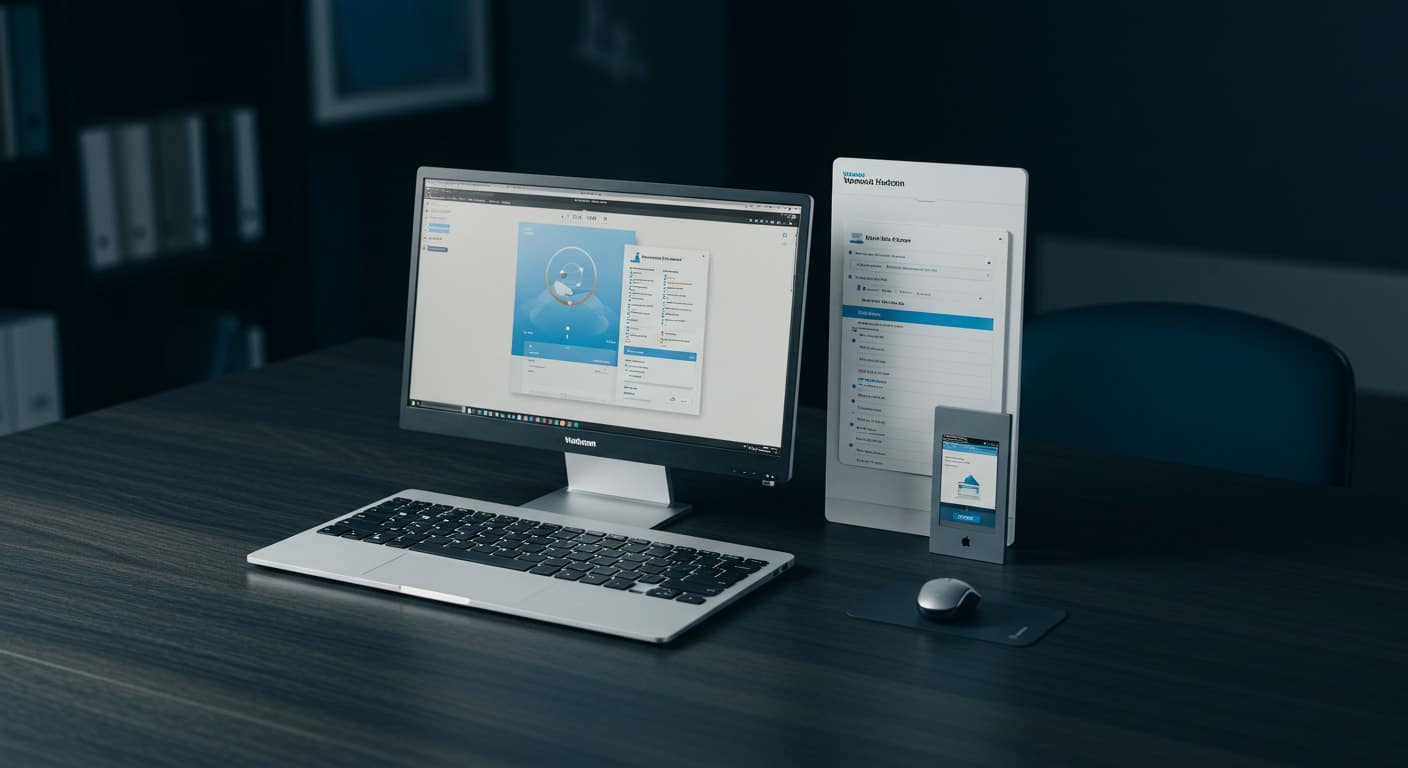Technology doesn’t stand still, and neither should your understanding of what it costs. With more companies turning to virtual desktops, cloud deployment, and hybrid cloud management, the way IT budgets are structured is shifting. And in the middle of all this change sits VMware Horizon—widely used, feature-rich, and often misunderstood when it comes to pricing.
As budgets tighten and expectations rise, knowing where every dollar goes matters. You’re not just buying a tool; you’re buying into a system. One that can either streamline your operations or weigh them down with complexity.
So, how much does VMware Horizon actually cost—and is it worth it? Let’s dig in.
What Is VMware Horizon?
Horizon at a Glance
At its core, VMware Horizon gives you a way to manage and deliver virtual desktops and applications to your users—wherever they are. Instead of installing everything locally on each device, Horizon centralizes your systems, making it easier to maintain, secure, and scale. For companies managing distributed teams or dealing with legacy infrastructure, it offers a practical solution.
It’s built to serve up corporate resources securely and consistently across environments, whether your users are in the office, working remotely, or hopping between both. It also gives you administrative control over app delivery, desktop performance, and user management—all from a centralized dashboard.
Horizon fits into several deployment models: on-premises, cloud-based, or hybrid. This flexibility is one of its biggest strengths. But that same flexibility often opens the door to complexity—especially when it comes to pricing, licensing, and understanding what’s actually included.
Deployment Options: On-Premises, Cloud, and Hybrid
Choosing the Right Environment
How you deploy VMware Horizon directly affects not only performance but how much you’ll end up paying. There are three main options to consider:
- On-Premises: Everything runs on your physical servers. You maintain full control but take on all infrastructure costs, including hardware, energy, and support.
- Single Cloud Deployment: Ideal for organizations looking to offload infrastructure management. You rent what you need, but you’re tied to one provider—usually Microsoft Azure or AWS.
- Multi Cloud Deployments: Offers flexibility by spreading resources across multiple cloud vendors. That said, managing it requires serious coordination and often leads to fragmented billing.
A hybrid cloud deployment combines on-premises infrastructure with cloud services. While it promises flexibility, it introduces layers of complexity—and subscription pricing becomes harder to predict. Cloud services can scale easily, but without careful oversight, support costs and usage fees can escalate fast.
VMware Horizon Pricing Models: Standard, Advanced, and Enterprise
VMware Horizon offers three main pricing tiers. Each tier increases in capabilities—and cost. Here’s what you’re looking at:
Horizon Standard
This is the entry-level tier designed for smaller teams or those just getting started with desktop virtualization. It includes:
- Basic cloud management services
- Support for standard virtual desktops
- Delivery of essential apps via app volumes
- Limited automation and integration options
It’s enough to handle straightforward use cases but can feel limiting if your environment grows or becomes more complex.
Horizon Advanced
A step up from Standard, Horizon Advanced is built for organizations that need a bit more power and control. It adds:
- Better support for various devices (including BYOD)
- Enhanced app performance
- Basic automation features and more granular control
This tier suits most SMBs and mid-sized IT teams looking to simplify app and desktop delivery without managing everything manually. It’s a decent middle ground, but still lacks deeper integrations and scalability tools available in the top tier.
Horizon Enterprise
The most comprehensive—and expensive—tier. Horizon Enterprise is intended for large organizations with complex needs. It includes:
- Full hybrid cloud deployment support
- Deep integration with Microsoft Azure
- Advanced automation and analytics
- Enhanced security and compliance capabilities
You get a full suite of tools designed to handle heavy workloads and dispersed teams. But it comes at a price—one that can rise quickly as usage scales or when custom features are added.
What Drives VMware Horizon Pricing Up?
Licensing and Subscription Models
VMware Horizon licensing isn’t one-size-fits-all. You may be charged in several ways:
- Per-user: A flat fee for each named or concurrent user
- Per-device: Pricing based on endpoints accessing the service
- Per-server: Less common now, but still seen in legacy environments
Then there’s the license type. A subscription gives you ongoing access and support, usually on an annual basis. A perpetual license is a one-time fee—but it often requires costly add-ons for updates and support, which can outweigh initial savings over time.
Add-ons and Usage
Base pricing is just the beginning. The real expenses often appear later:
- Charges for connection servers, user profiles, and session management tools
- Costs for advanced software upgrades, patching, and backup services
- Premium support fees for faster response times or 24/7 assistance
And let’s not forget scaling—when your demand spikes, so can your bill.
The Hidden Costs You Shouldn’t Ignore
Infrastructure and Complexity
Setting up Horizon isn’t just about flipping a switch. It can involve:
- Long deployment timelines
- Extensive training for your team
- Ongoing management and troubleshooting
You may also need third-party vendors to help with customization or maintenance. Then there are the client-side considerations—installing and updating software on every device adds labor and time.
Cloud Overheads
If you run Horizon on a public cloud like Microsoft Azure, you’re billed by usage: CPU, memory, storage, bandwidth—the list goes on. While flexible, it’s hard to forecast.
Without real-time visibility, you can burn through budget faster than expected. Many teams find themselves stuck with unexpectedly high charges or underused resources they’re still paying for.
Looking at Total Cost of Ownership (TCO)
The license fee is just the tip of the iceberg. What you pay up front for VMware Horizon rarely reflects what you’ll spend over time.
TCO includes:
- Server and storage hardware (especially for on-prem setups)
- Admin overhead: image management, patching, updates, troubleshooting
- Time lost during outages or underperforming virtual desktops
- Ongoing support costs, especially if you’re not on a premium tier
Even in a cloud deployment, you’re on the hook for infrastructure usage. CPU time, RAM allocation, storage IOPS—all can swing wildly month-to-month.
VMware Horizon can offer power, but not without friction. For lean teams or budget-conscious departments, this model adds unnecessary weight. And in many cases, you’re stuck managing a system that demands enterprise-level resources… even when your needs don’t.
That’s where Apporto starts to look like the smarter move.
Modern Alternatives: Apporto’s Take on Desktop Virtualization
Apporto was built with modern environments in mind—ones that prioritize simplicity, speed, and cost-efficiency. Unlike VMware Horizon, Apporto runs entirely in your browser. There’s no software to install, no VPN to configure, and no hidden infrastructure to maintain.
It’s a true Zero Trust solution, with security embedded at every layer—without complicating access for users. Whether you’re running Windows, Mac, or Linux, Apporto delivers a consistent, near-native desktop experience—even at 4K resolution, across multiple monitors.
What sets Apporto apart:
- Unlimited support from real, knowledgeable people
- Fast deployment—often within 48 hours
- Simple, next-gen Kubernetes architecture
- Fully managed option
- LMS integration for Education, real-time collaboration, cloud file access
- No hidden fees, ever
Whether you’re in higher education, healthcare, or an SMB with a growing remote team—Apporto adapts quickly, without adding overhead.
Apporto vs VMware Horizon
| Feature | VMware Horizon | Apporto |
|---|---|---|
| Setup Time | Weeks to months | Hours to days |
| Software Install Required | Yes (clients, agents, VPNs) | No (browser-based access) |
| Cost Transparency | Low – many hidden fees | High – predictable pricing |
| Cloud Optimization | Partial (depends on setup) | Fully browser and cloud-native |
| Security Model | Mixed (VPNs, user configs) | Built-in Zero Trust |
| Ease of Use (IT/Admin) | High learning curve | Simple to manage |
| Support Model | Tiered, often slow | Fast, dedicated human support |
How to Choose the Right Virtual Desktop Solution
Ask yourself:
- How many users need reliable access?
- What devices are they using?
- What applications are you delivering—lightweight or resource-heavy?
- Do you need advanced security like Zero Trust or regulatory compliance?
- Is the licensing model simple, or are you paying for things you don’t use?
- How fast do you need deployment?
- Can your IT team handle the management load?
- Will the platform scale with your organization?
Apporto checks all these boxes—without the friction.
VMware Horizon Pricing: Make Your Investment Count
VMware Horizon does a lot—but at a cost. For many teams, the licensing structure, deployment effort, and ongoing support fees outweigh the flexibility it once promised.
You don’t need complexity to deliver secure, high-performance desktops. You need something that works—without the weight.
Apporto offers a simpler path: no VPNs, no multi-week setup, no surprise bills. Just modern, browser-based desktops, priced clearly and supported personally.
Explore Apporto today. You might not miss the complexity once it’s gone.






